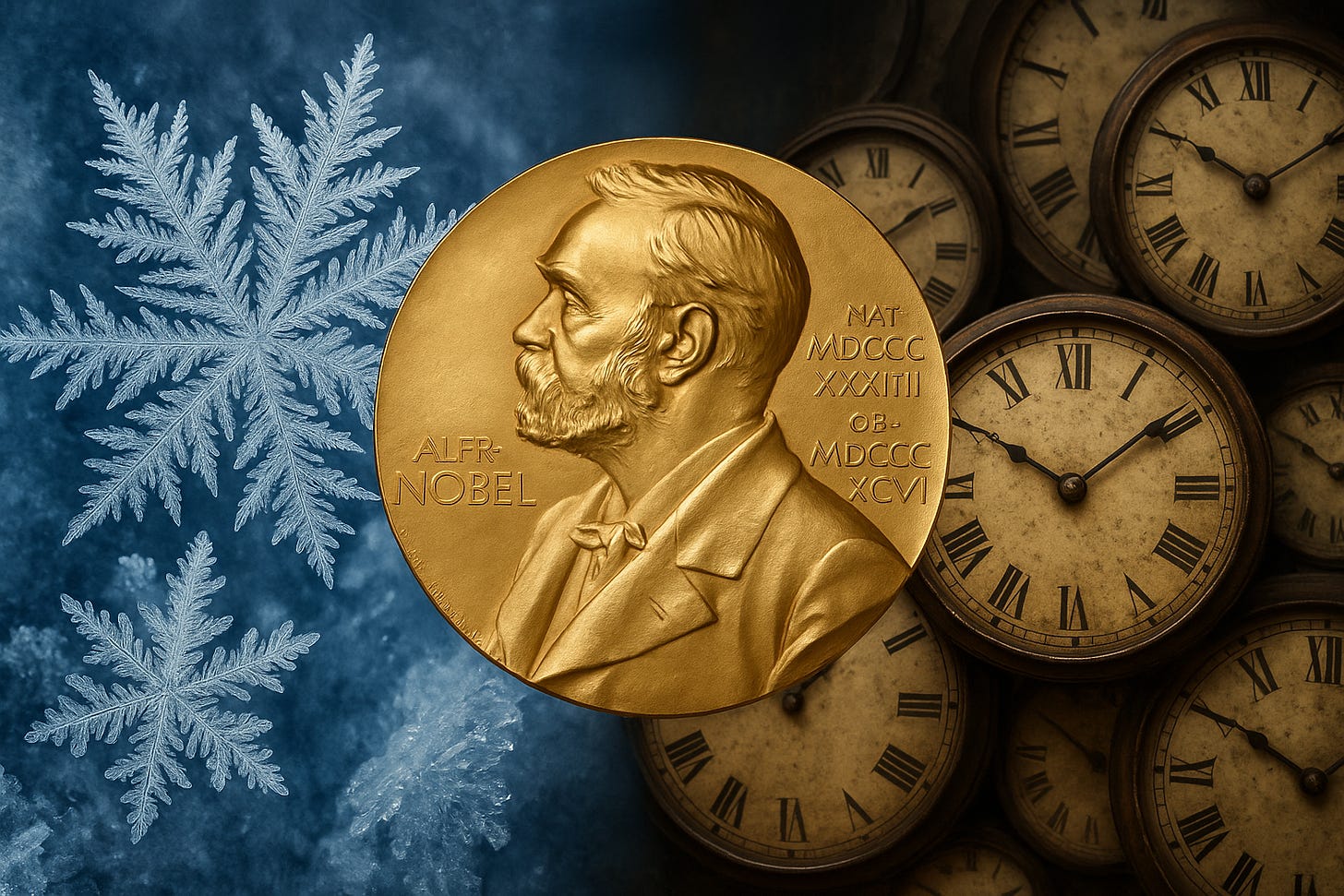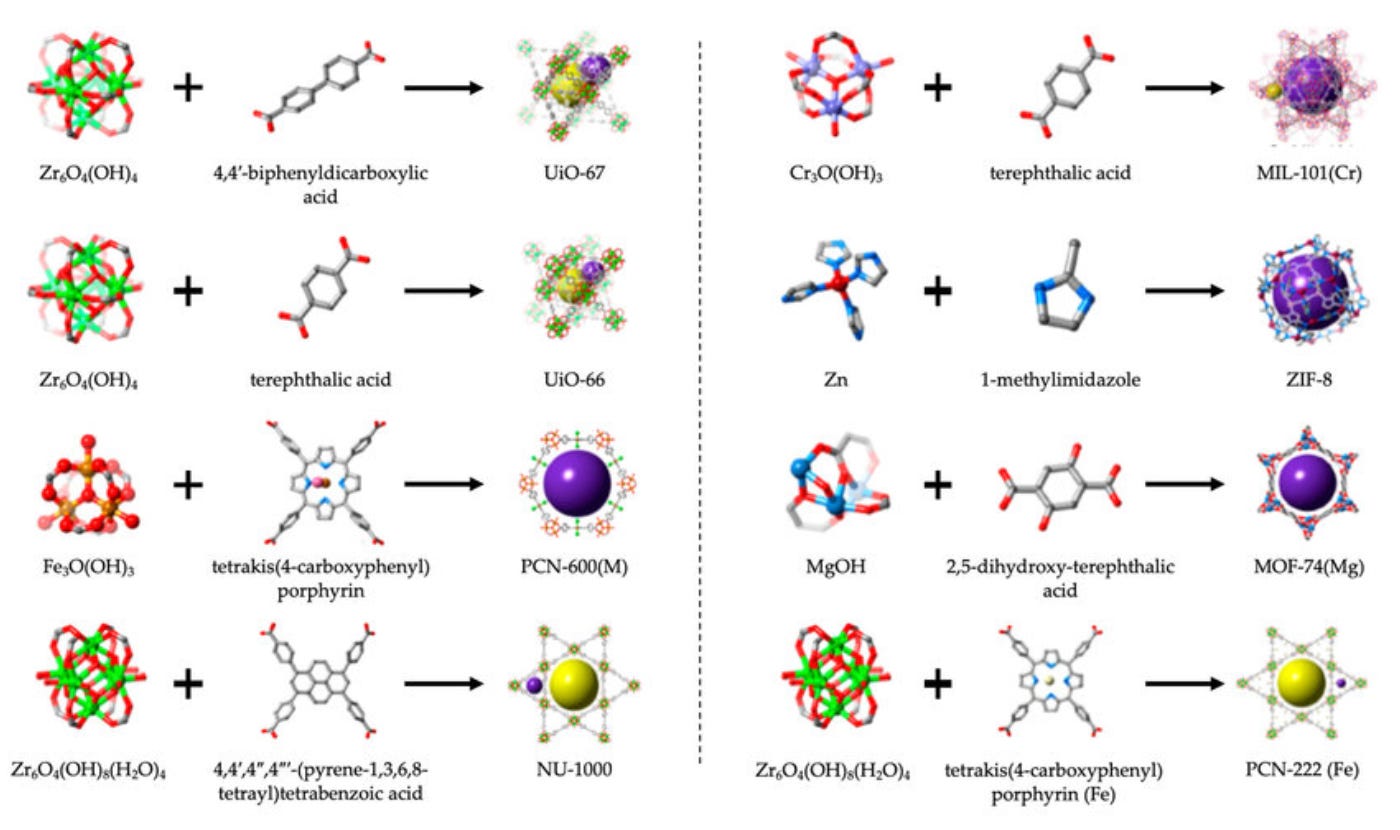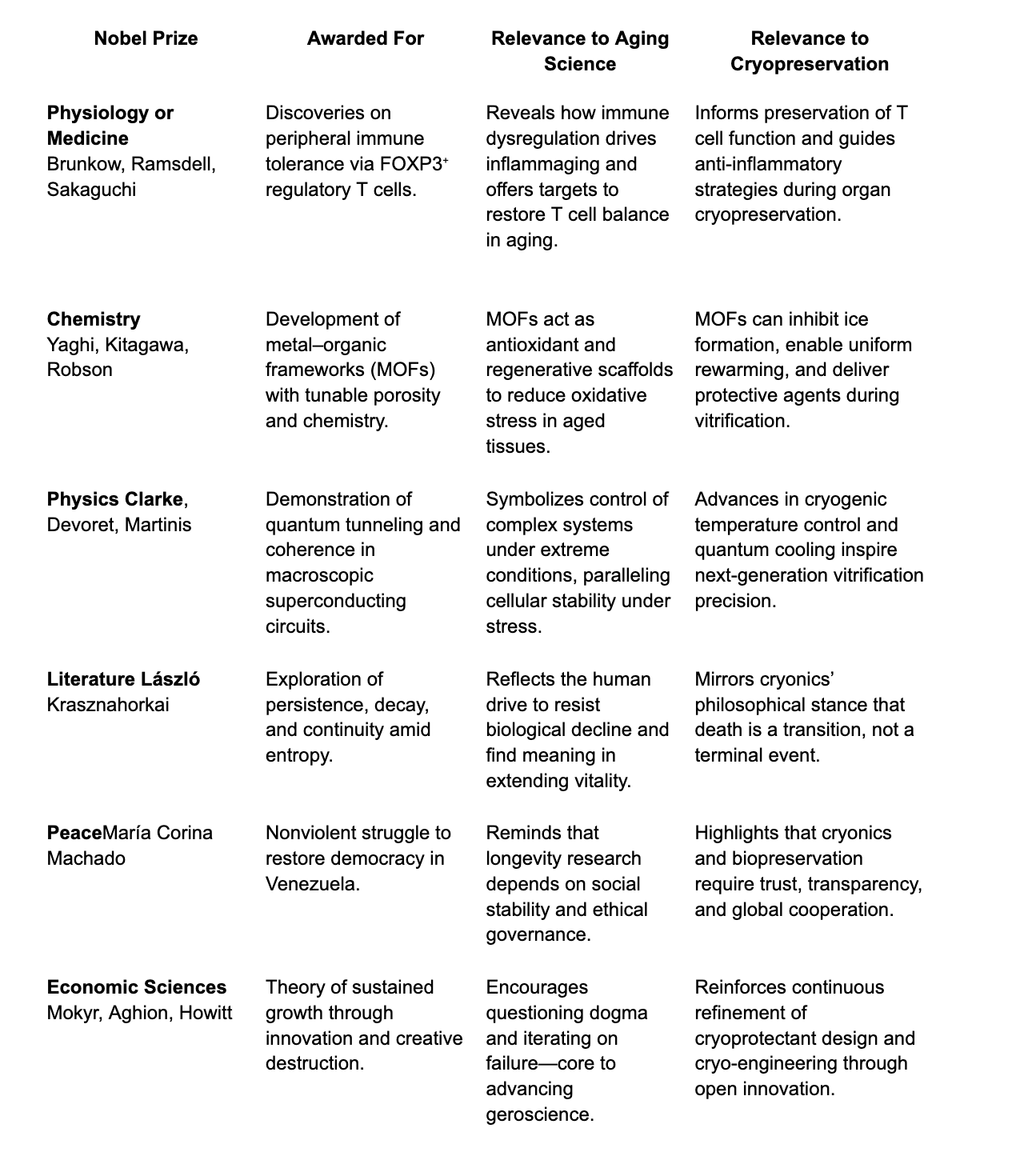The 2025 Nobel Prizes in Context of Longevity and Cryopreservation
I didn’t expect this year’s Nobel announcements to feel like a manifesto for cryonics and longevity—but taken together, they almost do.
Physiology or Medicine : Peripheral Immune Tolerance, senescent T cells and sterile inflammation
Mary E. Brunkow, Fred Ramsdell, and Shimon Sakaguchi received the 2025 Nobel Prize in Physiology or Medicine “for their discoveries concerning peripheral immune tolerance.” In simple terms, their work explained how the immune system learns to avoid attacking its own body. More specifically, they identified the transcription factor FOXP3 as the master regulator of CD4⁺ FOXP3⁺ regulatory T cells (Tregs) which are specialized cells that suppress autoreactive T cells in peripheral tissues to maintain self-tolerance and prevent autoimmunity
Does this discovery apply to geroscience? Absolutely, though the connection lies more with the T cells than peripheral immunity. As we grow older, Tregs become numerically and functionally compromised, and senescent. This dysregulation leads to excessive secretion of pro-inflammatory cytokines such as IL-6 and TNF-α, accelerating stem-cell exhaustion, tissue degeneration, and metabolic dysfunction. One of the most discussed phenomena in aging biology today is “inflammaging”, which is the chronic, low-grade inflammation that gradually escalates with age. The problem is so fundamental that chronic inflammation is now recognized as one of the 12 updated Hallmarks of Aging. There are many promising interventions to reduce the inflammation, but to stay within the realm of T cells and geroscience, it is worth noting that CAR-T cells are explored as potential senolytic agents. Chimeric Antigen Receptor (CAR) T cells are patient-derived T cells modified to recognize specific surface antigens. In oncology, they destroy malignant cells; in aging research, early preclinical work now retools them to identify and eliminate senescent cells expressing markers like uPAR or B2M. Conceptually, this represents the inverse of Treg biology: while Tregs suppress excessive immune attack, CAR T cells can be programmed to selectively remove chronically harmful or senescent targets. Both rely on deep understanding of T cell signaling and specificity fields that trace their mechanistic roots directly back to FOXP3 and the regulatory circuitry uncovered by the 2025 Nobel laureates.
Now, does the 2025 Nobel prize in medicine apply at all to cryopreservation? I thought I would be writing a fully speculative paragraph here, but surprisingly, the relationship between T cells and cryopreservation was explored before. To get the obvious out of the way, T cells are preserved in the lab setting to be further used for experiments, and CAR-T cells are cryopreserved as ready-made therapy to be shipped to patients. However, since T cells rely on their ability to detect antigens on the surface of other molecules, their structure responsible for detection must be preserved intact so that the cells could regain function. In spleen samples as well as in CART precursor cells, it was found that while viability decreased after cryopreservation, the functionality remained high. Scaling up, in cryopreserved thymus slices transplantation experiments, the organ was able to regain T cell differentiating ability. I have not found papers exploring what happens to Tregs during whole organ cryopreservation, but a very interesting and applicable insight can be borrowed from the field of transplantology. A concept crucial to avoid in organ cryopreservation is ischemia (when an organ or parts of it don’t get enough blood and oxygen). A study of livers procured for transplant found that ischemic injury, which can happen when you perfuse the organ, attracts a CD4+ helper t cells, which initiate a cascade of inflammatory response. Although this process was not studied under cryopreservation conditions, it is likely that the same scenario happens. Perhaps, including anti-inflammatory small molecules targeting TNF-α or IL-6, or the damage associated molecular patterns introduced by the paper, into the cryoprotective cocktail would improve the perfusion outcomes? If you were looking for a project idea, you just found one.
Chemistry: Metal–Organic Frameworks, bone scaffolds and oocytes
Susumu Kitagawa, Richard Robson, and Omar Yaghi were awarded the Nobel Prize in Chemistry “for the development of metal–organic frameworks (MOFs).” The term MOF refers to a class of crystalline, porous coordination polymers in which metal ions or clusters (the “nodes”) are connected by organic linkers (the “bridges”) to form extended, three-dimensional networks with internal cavities and channels. These structures combine high surface area, tunable pore size and chemistry, and modular functionalization.
Beyond gas capture and catalysis (their most mature applications), MOFs are increasingly leveraged in biomedical engineering and drug delivery. Their porosity and internal cavities allow for high loading of therapeutic molecules, while the ability to modify pore environments, surface chemistry, and degradation rates enables precise control of adsorption and release kinetics, organ targeting, and stimuli responsiveness (pH, redox, temperature). This great review describes how MOF platforms have been used to deliver small-molecule drugs, nucleic acids, imaging agents, and combination therapeutics, often improving solubility, bioavailability, and localization.
MOFs have already been studied in the context of aging and bone regeneration. Scientists in Shanghai created magnesium and cerium-based metal–organic frameworks (Ce-MOFs) and implanted them onto aged mouse femurs with bone defects to test whether they could rejuvenate old bone tissue. These Ce-MOFs acted like long-lasting antioxidants as the cerium ions could switch between Ce³⁺ and Ce⁴⁺ states to keep removing reactive oxygen species (ROS). This reduced oxidative stress and inflammation, both of which normally drive bone cell aging. As a result, bone marrow stem cells in the treated mice stayed healthier and more active, and immune cells shifted toward a tissue-healingtype . In the end, imaging and histology showed that the treated bones had more new bone growth and stronger structure, suggesting that Ce-MOFs can help restore the regenerative capacity of aging bone.
Now, for cryopreservation, I envision MOFs great future. Several applications of MOF to cryopreservations have already been published. My favorite one is iron-based amino-functionalized metal–organic frameworks (Fe-MOFs) to improve oocyte cryopreservation. The method suppressed ice crystal growth to just 16.8% of the size formed in pure water by forming hydrogen bonds through their amino and carboxyl groups, which allowed them to adsorb onto and stabilize the ice–water interface. Remarkably, these Fe-MOFs also showed intrinsic photothermal activity, rapidly heating from 25 °C to over 86 °C under near-infrared light enabling fast, uniform rewarming that prevents recrystallization. When used to vitrify mouse oocytes, this MOF achieved 95.1% post-thaw survival, even when traditional cryoprotectant concentration was half of what is recommended in the standard procedures. The rewarmed oocytes then have undergone normal fertilization and embryonic development.
In another attempt, researchers in South Korea designed zirconium-based metal–organic frameworks (MOF-801) as smart antifreeze particles to protect cells during freezing. They shaped these nanoparticles with precise surface curvature and attached amino acids valine and threonine, which are the same ones that natural antifreeze proteins use. This gave the MOFs a surface pattern that could “fit” onto the edges of forming ice crystals, blocking them from growing into sharp, cell-damaging structures. When used to freeze human kidney epithelial cells, the smallest MOFs kept more than 60% of the cells alive after thawing (compared to 40% control), showing that engineered materials could physically control how ice forms
On a more speculative note, the blood–brain barrier (BBB) represents a crucial challenge in cryonics. Some cryoprotectants are unable to penetrate it effectively, while in other cases, excessive permeability can lead to cerebral edema. Although this cool paper does not address cryonics directly, the section on ischemic stroke (ischemic injury) demonstrates how metal–organic frameworks can be engineered to deliver drugs across the BBB. Could similar strategies be adapted for cryoprotectant delivery in cryonics applications? Finally, if MOFs can combine mass transfer modulation, structural stability, and heating response, they would transform cryoprotectant design from a passive solvent problem to an active scaffold problem.
In summary, MOFs bring architectural precision to processes that have traditionally been chemically chaotic.
Physics: tunneling, quantum computers and liquid helium
The 2025 Nobel Prize in Physics was awarded for showing that quantum effects can appear in large-scale electrical circuits. The scientists, John Clarke, Michel Devoret, and John Martinis, used a special kind of metal called a superconductor, a material that, when cooled to just a few degrees above absolute zero, can carry electricity with no resistance at all. In this ultra-cold state, they placed a tiny barrier inside a superconducting loop and discovered that electrons could tunnel through the barrier (think of a baseball passing through a wall but the wall is intact, in one piece), a purely quantum behavior where particles pass through obstacles they normally couldn’t.
This showed that even a visible, man-made circuit can behave like a quantum system if it’s cold enough. The same tunneling effect that allowed current to jump between energy levels became the basis for superconducting qubits, where scientists now use microwave pulses to control those quantum jumps encoding information in states that can exist as 0, 1, or both simultaneously until measured. This discovery made it possible to build quantum computers and opened an entirely new chapter in how we understand and manipulate matter under extreme cold.
Here, the connection to aging or cryo will be even more stretched than before, but indeed, there are some, like the fact that supercomputers might be able to figure out both;) Although there are no practically useful quantum computers yet, there are quantum-classical generative algorithms that already contribute to science, such as finding the small molecules targeting the KRAS proto-onco gene. I talk about it in my paper Deep learning and generative artificial intelligence in aging research and healthy longevity medicine which has an entire part on quantum computing and aging.
In cryo, the most direct parallel to superconductivity is temperature control. While superconductors operate near –273.15°C (absolute zero), cryopreservation typically cools tissues only to –196°C which is the temperature of liquid nitrogen, at which biological time effectively stops, eliminating the need to go colder for preservation purposes. To reach –273°C, physicists use dilution refrigerators that first pre-cool with liquid helium-4 to about 4 K, then rely on the phase separation of helium-3 and helium-4 isotopes to absorb heat through evaporative cooling inside multi-stage, vibration-isolated vacuum systems designed to maintain stable quantum states. Intriguingly, liquid helium has also been explored as a potential cryogenic medium for biology, offering ultra-rapid cooling rates that enhance vitrification, the glass-like solidification without ice crystal formation, in sensitive cells such as human stem cells, bovine oocytes, and HeLa or L929 cell lines. However, helium’s cost and scarcity have so far prevented large-scale use in organ preservation.
Literature - the appocalypse approaches - so what?
László Krasznahorkai’s Literature Nobel celebrates an author whose works explore persistence amid decay. I admit that I have not read his books yet (in my Audible queue!), but I watched a summary video of his writing to prepare myself for writing this paragraph- there is a lot of talk about death. His meditations on entropy, continuity and the fear of the apocalypse resonate with the existential dimensions of longevity science and moral grounds of cryonics. I prepared a few quotes from his books:
“Death, he felt, was only a kind of warning rather than a desperate and permanent end.”
This line could easily appear in a cryonics manifesto or an essay on digital immortality (uploading). In both, death is not the end but a threshold, an interruption before a new continuity; you would have to first cease to exist in the current world, but would (assuming that the tech works) reappear in either the completely different world with possibilities unlimited by the biological constraints (uploading) or in the world that is (hopefully) more technologically, medically and society advanced than what you left behind (cryonics). While the author has most likely meant eternal life in some sort of a religious understanding, if we are being really honest with ourselves, each of the three options (“heaven”, cryonics, uploading) relies on hope of revival in a better place. It is not the purpose of this substack to convince you to believe in an, but please, do me a favor and entertain the idea that the scientifically grounded life extension operates on almost the same moral ground as any religion. In that sense, scientifically grounded life extension is not a rebellion against religion but its secular translation: a faith that technology, not divinity, may one day redeem the finite.
The quote below operates on the same interpretation as the one above, but I am inserting it here for you to get to know László Krasznahorkai’s signature style - loooong sentences.
“I would leave everything here: the valleys, the hills, the paths, and the jaybirds from the gardens, I would leave here the petcocks and the padres, heaven and earth, spring and fall, I would leave here the exit routes, the evenings in the kitchen, the last amorous gaze, and all of the city-bound directions that make you shudder, I would leave here the thick twilight falling upon the land, gravity, hope, enchantment, and tranquility, I would leave here those beloved and those close to me, everything that touched me, everything that shocked me, fascinated and uplifted me, I would leave here the noble, the benevolent, the pleasant, and the demonically beautiful, I would leave here the budding sprout, every birth and existence, I would leave here incantation, enigma, distances, inexhaustibility, and the intoxication of eternity; for here I would leave this earth and these stars, because I would take nothing with me from here, because I’ve looked into what’s coming, and I don’t need anything from here.”
Heaven, cryonics, or uploading… all three emerge from the same existential grammar. They are variations of one sentence humanity keeps rewriting: that decay may not be destiny. Krasznahorkai writes it in prose; scientists write it in protocol.
Peace prize: you can’t push the needle of science forward if you are too conncerned with surviving until the next day
The 2025 Nobel Peace Prize was awarded to María Corina Machado, the Venezuelan opposition leader, for her unwavering fight to restore democracy through nonviolent means. The Nobel Committee recognized her for showing exceptional courage in resisting authoritarian rule, uniting the opposition, and advocating for peaceful political transition despite personal risk. Although the Peace Prize is definitely the hardest to tie to longevity and cryopreservation directly, we have to agree that the questions about life extension as a science can only be asked either in times of prosperity or by people with enough financial and contextual stability to ponder such a high risk ground. Political stability and ethical governance are prerequisites for advancing and democratizing life-extending and biopreservation technologies. Cryonics and longevity medicine cannot flourish in environments of distrust, censorship, or inequity; they rely on transparency, regulation, and moral legitimacy.
Economics: understand why things work, and keep on innovating
The 2025 Nobel Prize in Economic Sciences was awarded to Joel Mokyr, Philippe Aghion, and Peter Howitt for explaining why economic growth can persist instead of reaching a natural limit. Mokyr traced this shift to the Enlightenment, when technological progress became anchored in scientific reasoning; people no longer just used inventions but sought to understand why they worked, enabling cumulative innovation. Aghion and Howitt formalized this process through the theory of “creative destruction,” in which new technologies continuously replace old ones. Their work showed that progress depends on allowing renewal while managing the disruption it brings. The main lesson for science here is simple: never rely 100% on dogma. I am not suggesting that we question everything as constant skepticism would paralyze progress, but if your findings do not immediately align with what is known or hypothesized, or if your peers dismiss your idea, it is worth giving it focused time, because there may be potential in it. Think about the relatively recent amyloid hypothesis scandal: for decades, the scientific community accepted amyloid buildup as the obvious driver of Alzheimer’s disease, but later it turned out that some of the foundational data supporting that view had been fabricated.
Another takeaway from the 2025 Economics Nobel is the importance of understanding why things work, not just that they work. For example, we know that cryoprotectants function at the physical level to prevent ice formation, but we still do not fully understand the molecular basis of their toxicity. Better insight into what actually happens during cryoprotection could lay the groundwork for designing new, less toxic cryoprotectants directly echoing Mokyr’s reasoning that progress accelerates when mechanisms are understood, not merely applied. To connect Aghion and Howitt’s “creative destruction” to longevity science, consider the evolution of biological aging clocks, where new algorithms continuously replace older ones. Each refinement in geroprotector design or cryoprotectant chemistry mirrors the economic cycle of innovation and obsolescence: hypotheses are tested, fail, and are replaced by better ones. Sustained progress, whether in economies or in biomedicine, requires openness to revision, tolerance for failure, and the belief that improvement has no final state. The Nobel’s message, stripped of discipline, is simple: growth, like life, persists only when we keep dismantling what once seemed sufficient.
Quick summary to shine in conversations
Now, if you want to use this substack as a conference networking conversation driver (or if you are a “fun fact!” A person like me;)) here is a quick summary table.
Do you want to bet on when and to whom the first Nobel prize on aging or cryo is going to be awarded? Comment and let’s discuss






